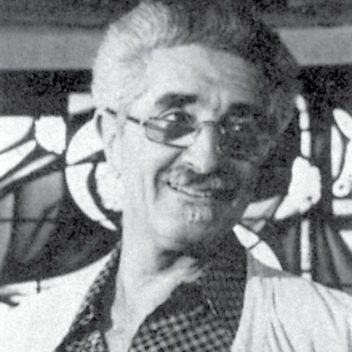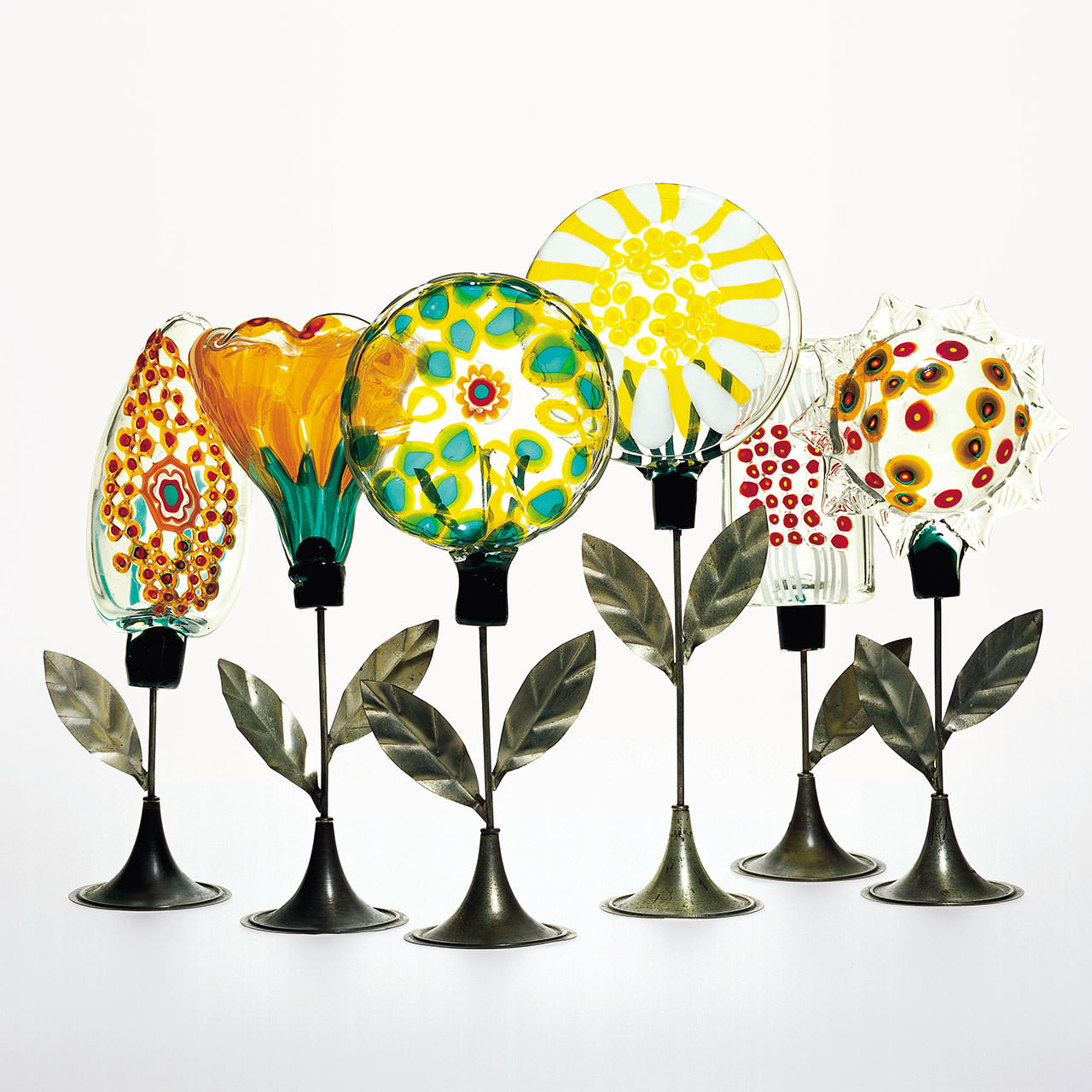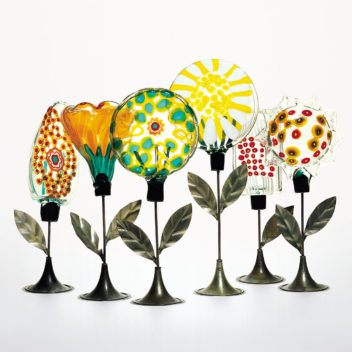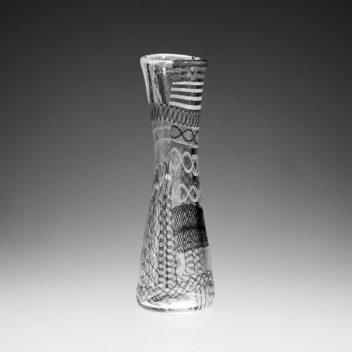
Anzolo Fuga 1915–1998
Anzolo Fuga was born on Murano. He apprenticed as a draftsman at the Cristalleria di Venezia e Murano and attended the Istituto d’Arte di Venezia, where he studied under Guido Balsamo Stella. In 1954, he opened a shop for the decoration of blown glass and the art of stained-glass windows, and it was there that he began to use sheets of Murano glass blown and decorated in hot-work: his colorful stained glass windows were successfully exhibited in several editions of the Biennale. He was director of the Abate Zanetti School of Art for Glassworkers from 1949 through 1972, and he collaborated freelance with several workshops after the late ’50s. Among them was A.VE.M., for whom he created large pieces with asymmetric shapes and abstract decor, using murrine and glass rods in almost all of his brightly colored collections. During this time, he also collaborated with Domus Vetri d’Arte and IVR Mazzega.


